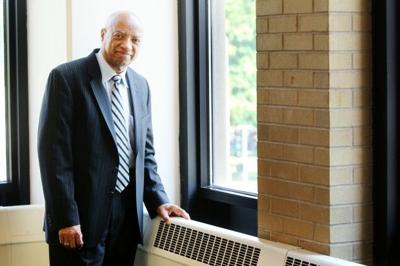Amid the ongoing debate to reform 50Â╚╗Ď╩ËĂÁÔÇÖ use of tax incentives, a key economic development office appears to be paring back its use of property tax abatement in an effort to maximize revenue.
The 50Â╚╗Ď╩ËĂÁ Land Clearance for Redevelopment Authority is scheduled to review more than a dozen development proposals at its meeting Tuesday, most requesting property tax breaks for redevelopment projects.
ThatÔÇÖs typical. WhatÔÇÖs not is that the LCRAÔÇÖs staff is now recommending some projects in rebounding neighborhoods pay at least some new taxes after redevelopment wraps up.
ItÔÇÖs part of the overall effort to rethink how the city does development assistance, said Alderman Joe Roddy, who chairs the Board of AldermenÔÇÖs Housing, Urban Development and Zoning committee. And it may signal a slight change in approach by the new administration of Mayor Lyda Krewson.
People are also reading…
ÔÇťI think as much as anything, the mayor was interested in trying to get some additional revenue from every project thatÔÇÖs approved,ÔÇŁ Roddy said.
Tax abatement is a commonly used development incentive in 50Â╚╗Ď╩ËĂÁ, utilized by big commercial projects down to single-family homeowners. The LCRA oversees its use and sends a recommendation to aldermen, who must give final approval.
In the past, the LCRA has recommended 100 percent property tax abatement for five or 10 years, making the city and school district wait a decade for new property tax revenue.
by the 50Â╚╗Ď╩ËĂÁ Development Corp., the cityÔÇÖs economic development arm, found that the city was missing out on millions of dollars a year in forgone revenue due to incentive use. Still, many in the development community say that lots of projects wouldnÔÇÖt get financing without abatement or other breaks.
Even so, there appears to be growing emphasis on finding new revenue. RoddyÔÇÖs committee and the SLDC, headed by Otis Williams, r designed to limit how much is offered to projects in more stable neighborhoods.
ÔÇťWe started looking at reform just shortly after we received the (incentive report last year),ÔÇŁ Williams said. ÔÇťSome of it has just taken awhile to make sure we are moving in the right direction. But this also reflects the position the administration has taken as well, not to eliminate incentives but to make sure we have done an analysisÔÇŁ on their necessity for each project.
The projects proposed for lower tax abatement are:
ÔÇó A $4.1 million, 21-unit apartment building in Soulard at 1001 Russell Boulevard. The developer is listed as Simpson-Closser in city development documents. The city has recommended 10 years of 80 percent tax abatement.
ÔÇó A $1.4 million renovation of a Soulard building at 2330 South 12th Street into seven condominiums. The city recommends five years of 75 percent tax abatement. The developer is listed as Renovations Unlimited LLC and Ronald Seabaugh.
ÔÇó A $1.5 million rehab of a building at 2222 Menard Street into office space and two residential units. The city staff recommends 10 years of 80 percent tax abatement.
ÔÇó A renovation of a building at 4170 Manchester Avenue for office space and an . The city recommends 10 years of 90 percent tax abatement.






